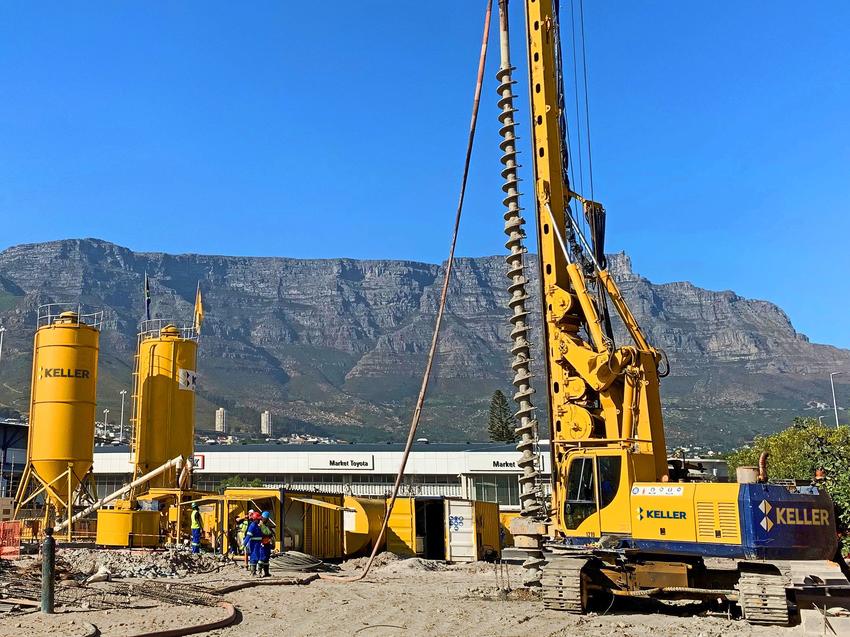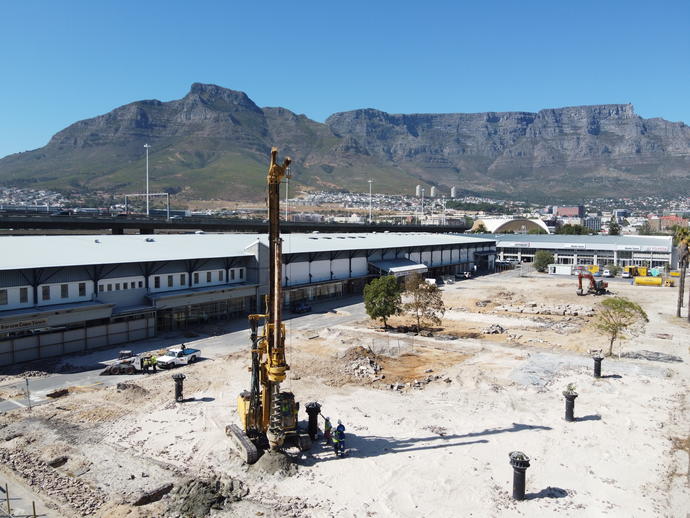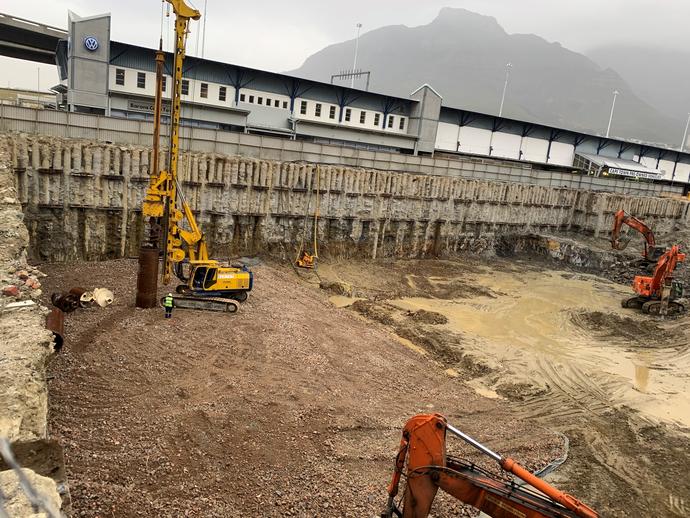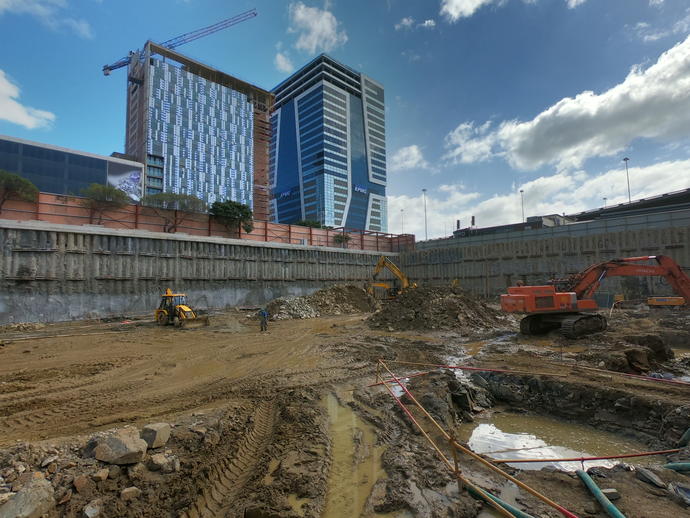Keller provides excavation support comprising of soldier piles, jet grouting, anchors and auger piles for the Harbour Arch Project.

Leveraging its experience of executing technically challenging geotechnical projects with accelerated programmes, Keller, formerly known as Franki Africa, once again proved its mettle at the Harbour Arch project in Cape Town.
That the Harbour Arch is set to become an iconic landmark in Cape Town is not disputed. Developed by the Amdec Group, with, among other developments in its portfolio, The Yacht Club, Melrose Arch and Evergreen Lifestyle, the Harbour Arch project is set to be the largest mixed-use precinct in the ‘Mother City’ CBD. Consisting of six individual towers, the development will offer a 360 degree view of the city, Table Mountain, the harbour and beyond.
Keller’s contracts engineer, Daryn Cloete, explains how the three-level basement of approximately 11 m in depth, was constructed. The excavation consisted of loose sandy soils, stiff clays and hard rock material, all amounting to 66 000 m³ of material to be removed to spoil sites.
"The project comprised of both lateral support and foundation piles. The lateral support was essentially a triple basement, constructed by means of soldier piles, jet grout columns, anchors and gunnite arches with dewatering included in the scope of works. The foundation piles comprised of large diameter temporary cased augered piles, which were socketed into hard rock," explains Daryn.

Not without challenges
One of the major challenges the team had to contend with was the disruptive nature of the COVID-19 pandemic. The site handover for the start of the project was on the 22nd of January 2020. Having mobilised to site and commenced with the lateral support piling in February, COVID-19 struck, prompting the halting of operations for three months from March to May, before mobilising back on site in June 2020.
“Apart from COVID-19, concrete obstructions and old foundation footings, as well as the relocation of services also presented major challenges and resequencing of the works, including building of a cable tray capping beam on top of the lateral support piles to house the relocated services,” explains Daryn.
“The jet grouting proved to be a winner with regards to sealing of the basement against large scale water ingress. It was an important factor in the design of the project,” says Daryn.
“Apart from the basement final level being below mean sea level, the Keller site team also had to contend with substantial groundwater in the excavations, which required dewatering. This water was pumped and filtered prior to removing it from site,” says Daryn.
Despite the COVID-19 influenced lockdown setting the project back by three months, the service relocations and additional works, Keller was able to meet the prescribed six-month construction programme, handing over the project in September 2020.

Other aspects of the project
The challenges of sequencing the earthworks with all its obstructions, changes in rock and the water needing to be removed, highlighted the importance of the jet grouting in sealing off the basement to strong underground water flows from both the ocean and mountain side of the site, says Daryn.
The Keller arsenal of equipment, local network, team effort on site with professionals, client, main and subcontractors, allowed for changes to scope and programme to be accommodated without incurring further programme drag. Additionally, on one section of the project site, the rock level was much deeper than envisaged, and Keller had to install large diameter temporary cased auger piles for the foundations.
In conclusion, Daryn says the major talking point for Keller on this large project was the ability to keep up with the programme in the face of the COVID-19 pandemic and an array of unforeseen challenges. “We had to do partial handovers to the building contractor, to allow them access to the foundation piles and other portions of the basement, while we were still busy on site. This was another challenging, yet well executed and flagship project for Keller,” he says.
As Henry Ford said; “If everyone is moving forward together, then success takes care of itself” and that is what Keller, along with the client, professional team and subcontractors achieved on this project.

Article published in the April 2021 edition of the SAICE Civil Engineering Magazine